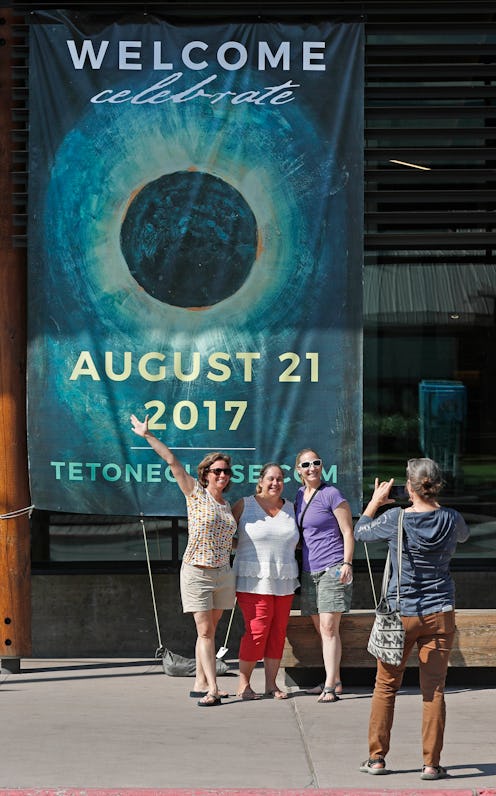
While the last solar eclipse visible to almost everyone in the United States was 99 years ago, there was another solar eclipse on Aug. 31, 1932. And, this 1932 New York Times article about the 2017 solar eclipse is kind of hilarious. In 1932, astronomers made predictions about when Americans would have their next chance to see a solar eclipse. It's spot on. Because, science is real. They even almost predicted the blizzard of '78 — they were only one year off.
While the astronomers who made these predictions 85 years ago are likely no longer living, the proof that you can use scientific evidence to predict major planetary events, including weather patterns, with startling accuracy is pretty amazing. The 1932 article was tweeted by New York Times Investigative Reporter Eric Lipton. The article details that after predicting eclipse and weather patterns, the next best chance for people to view a magnificent solar eclipse after 1932 was today, Aug. 21, 2017.
"We are thus forced to the amazing conclusion that in the future there will not be another opportunity to view a total eclipse of the sun from the continent of the United States, under conditions that are really favorable and promise scientific success, until the eclipses of Aug. 21, 2017, and April 8, 2024."
OK, so they pretty much predicted today. The website Weather.gov provides weather data, and the likelihood of being able to see the eclipse based on weather, from eclipses dating back to 1901. For the February 1979 eclipse, it doesn't look like snow got in the way because the predicted blizzard actually happened one year earlier, but other than that the predictions were spot on.
It will be pretty cool to check back in 2024 and see if the predictions from 1932 for favorable eclipse viewing are accurate for that date as well. People have been predicting eclipses, with amazing accuracy, for more than 2,000 years, according to Popular Science.
"The idea that it's not just random is pretty incredible,” Jonathan Seitz, an associate professor of history at Drexel, told Popular Science. “The Mesopotamians figured it out first in part because they had a habit of writing things down. They were doing this because they felt that these things had meaning — they weren't just random natural phenomena.”
So, the next time you run across a science denier, show them this 1932 New York Times article. Then drop your mic, and walk away.